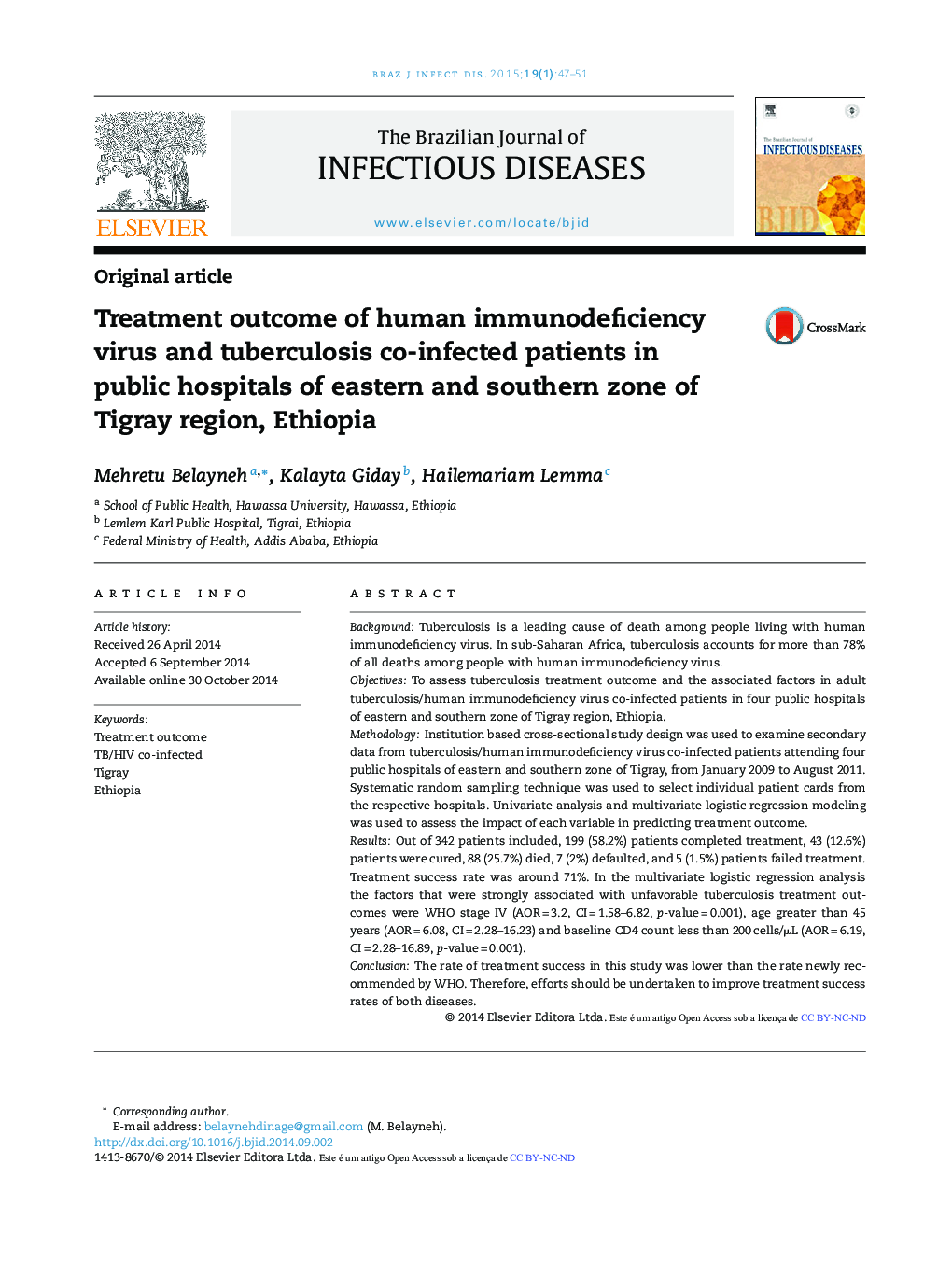| Article ID | Journal | Published Year | Pages | File Type |
|---|---|---|---|---|
| 3344005 | The Brazilian Journal of Infectious Diseases | 2015 | 5 Pages |
BackgroundTuberculosis is a leading cause of death among people living with human immunodeficiency virus. In sub-Saharan Africa, tuberculosis accounts for more than 78% of all deaths among people with human immunodeficiency virus.ObjectivesTo assess tuberculosis treatment outcome and the associated factors in adult tuberculosis/human immunodeficiency virus co-infected patients in four public hospitals of eastern and southern zone of Tigray region, Ethiopia.MethodologyInstitution based cross-sectional study design was used to examine secondary data from tuberculosis/human immunodeficiency virus co-infected patients attending four public hospitals of eastern and southern zone of Tigray, from January 2009 to August 2011. Systematic random sampling technique was used to select individual patient cards from the respective hospitals. Univariate analysis and multivariate logistic regression modeling was used to assess the impact of each variable in predicting treatment outcome.ResultsOut of 342 patients included, 199 (58.2%) patients completed treatment, 43 (12.6%) patients were cured, 88 (25.7%) died, 7 (2%) defaulted, and 5 (1.5%) patients failed treatment. Treatment success rate was around 71%. In the multivariate logistic regression analysis the factors that were strongly associated with unfavorable tuberculosis treatment outcomes were WHO stage IV (AOR = 3.2, CI = 1.58–6.82, p-value = 0.001), age greater than 45 years (AOR = 6.08, CI = 2.28–16.23) and baseline CD4 count less than 200 cells/μL (AOR = 6.19, CI = 2.28–16.89, p-value = 0.001).ConclusionThe rate of treatment success in this study was lower than the rate newly recommended by WHO. Therefore, efforts should be undertaken to improve treatment success rates of both diseases.
